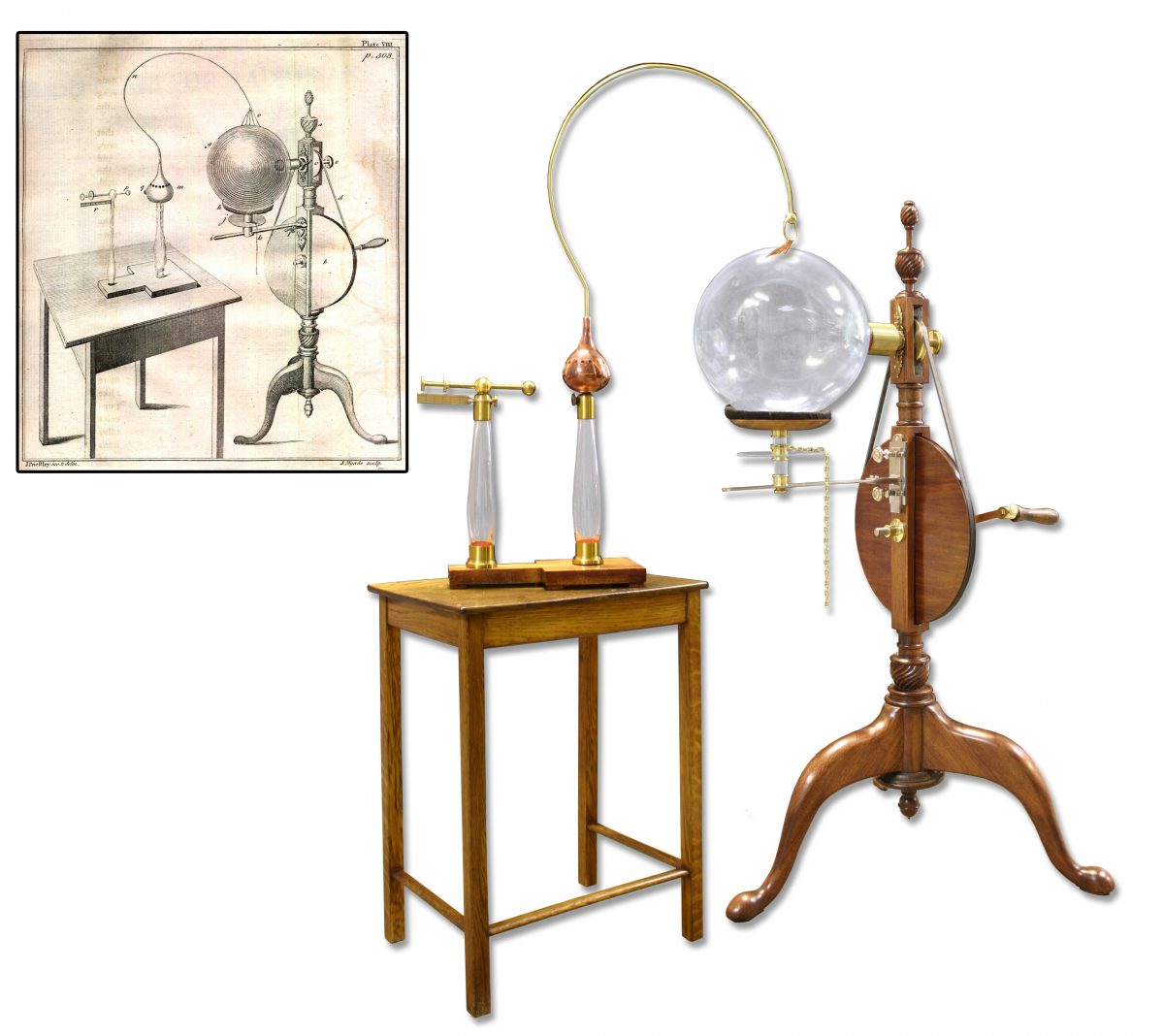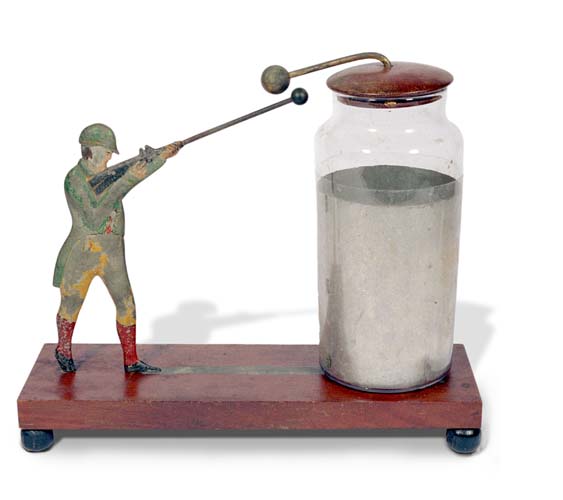In the 1770’s, Alessandro Volta became interested in the characteristics of swamp gases. In order to test flammability he invented his cannon, also called a spark Eudiometer. He filled the cannon with methane gas or a mixture of hydrogen and oxygen, placing a cork in the top to keep the gas from escaping. A small spark gap inside was used …
Joseph Priestley Friction Machine
Best known for his discovery of oxygen, Joseph Priestley also experimented with electricity and wrote the first comprehensive history on the subject, published in 1769. The book includes detailed descriptions of several static electricity machines. Since no complete examples of these machine survive today, Museum President John Jenkins constructed a faithful reproduction of one machine, using the illustration and description in Priestley’s …
Electrical Sportsman
By Joseph Wightman Originally three small paper birds were attached by threads to the electrode of the jar. When the jar was charged, the static electricity made the birds seem to fly into the air. When the sportsmen’s rifle touched the jar’s electrode, the jar discharged – the resulting spark sounding something like a small rifle shot – and the …
Leyden Jars
The Leyden jar originated about 1746 through the work of Dutch physicist Pieter van Musschenbroek of the University of Leyden and Ewald Georg von Kleist of Pomerania, working independently. A Leyden jar consists of a glass jar with an outer and inner metal coating covering the bottom and sides nearly to the neck. A brass rod terminating in an external …



